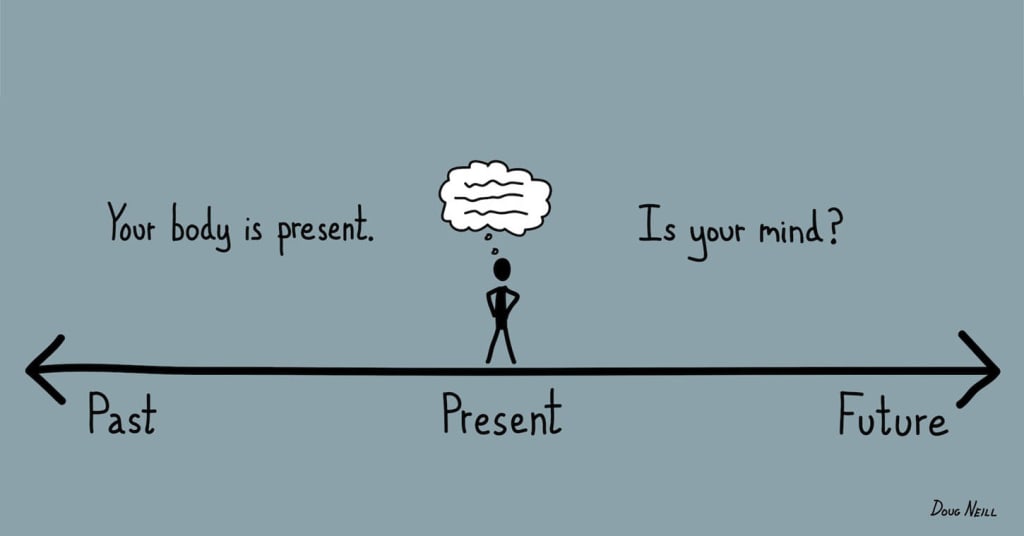How to be Mindfulness all the Time...
Here is the steps...

Being mindfulness involves cultivating a non-judgmental awareness of the present moment, paying attention to your thoughts, emotions, and bodily sensations without getting caught up in them. Practicing mindfulness can help reduce stress, improve focus, and promote a sense of well-being. Here are some steps to help you live with mindfulness:
- Start with your breath: Begin by taking a few deep breaths, focusing on the sensation of air entering and leaving your body. This can help you anchor your attention to the present moment and calm your mind.
- Pay attention to your body: Throughout the day, regularly check in with your body and notice any tension, discomfort, or sensations. Adjust your posture or take a break if necessary to maintain physical comfort.
- Be present during daily activities: Choose a few routine activities, such as eating, walking, or brushing your teeth, and practice being fully present during those moments. Focus on the sensations, sounds, and tastes associated with the activity, and bring your attention back to the present if your mind wanders.
- Practice mindful listening: When engaging in conversation, truly listen to the person speaking without planning your response or getting distracted by your thoughts. This not only enhances your mindfulness but also improves your relationships by fostering empathy and understanding.
- Observe your thoughts and emotions: Develop an awareness of your thoughts and emotions without judgment or attachment. Acknowledge them and let them pass without getting caught up in them or trying to suppress them.
- Engage in meditation: Set aside time each day to practice mindfulness meditation. Find a quiet space, sit comfortably, and focus on your breath or another point of concentration. If your mind wanders, gently bring your focus back without judgment.
- Cultivate gratitude: Spend a few moments each day reflecting on the things you are grateful for. This can help shift your focus from negative thoughts and emotions to positive ones, promoting mindfulness and well-being.
- Be patient with yourself: Mindfulness is a skill that takes time and practice to develop. Be patient with yourself and remember that it's normal for your mind to wander. The key is to gently bring your attention back to the present moment when you notice your thoughts drifting.
By incorporating these practices into your daily life, you can cultivate mindfulness, leading to greater awareness, reduced stress, and an improved sense of well-being.
Here's an example of applying mindfulness to a daily activity such as drinking a cup of tea:
Preparation: Begin by preparing your cup of tea. As you heat the water and select your tea, focus on the present moment and the actions you are taking. Observe the colors, textures, and scents of the tea leaves or tea bag.
Pouring the water: As you pour the hot water into the cup, notice the sound of the water and the steam rising from the cup. Be fully present in this action and observe the tea leaves or bag interacting with the water.
Waiting for the tea to steep: While waiting for the tea to steep, bring your attention to your breath, taking slow, deep breaths. Use this time to focus on the present moment, letting go of any thoughts about the past or future.
Observing the tea: Before taking your first sip, take a moment to observe the color and aroma of the tea. Notice any changes in the tea's appearance as it steeps and appreciate the transformation.
Drinking the tea: When the tea has reached your desired strength, take a sip. Focus on the sensations of the warm liquid entering your mouth, the taste of the tea, and the feeling of the cup against your lips. Savor each sip and experience the flavors and sensations fully.
Reflection: After finishing your cup of tea, take a moment to reflect on the experience. Consider the journey the tea has taken, from its cultivation to your cup. Express gratitude for the tea and the opportunity to practice mindfulness.
Throughout this example, the goal is to be fully present and engaged in each step of the process, bringing a non-judgmental awareness to your thoughts, sensations, and emotions. Practicing mindfulness in this way can help you develop greater focus, appreciation, and presence in your daily life.
About the Creator
Joseph Stalin
Joseph Stalin is an Engineer | Spiritual explorer, he is also an accomplished writer and storyteller. He loves to share his thoughts and experiences with others through reviews, inspiring stories, and insightful articles.
Enjoyed the story? Support the Creator.
Subscribe for free to receive all their stories in your feed. You could also pledge your support or give them a one-off tip, letting them know you appreciate their work.






Comments
There are no comments for this story
Be the first to respond and start the conversation.